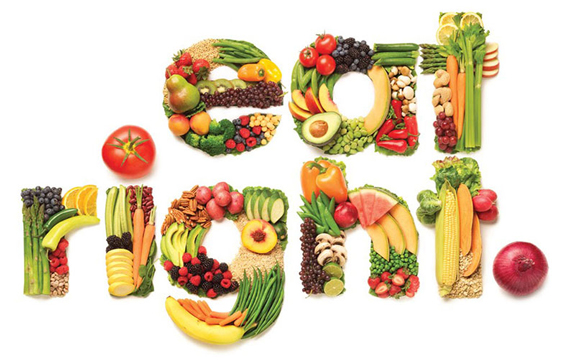Diet and nutrition are related but distinct concepts

Diet refers to the foods and beverages a person consumes on a regular basis, while nutrition refers to the science of how the body uses those foods and beverages to maintain health and well-being.
In general, a healthy diet includes a wide variety of nutrient-dense foods, including fruits, vegetables, whole grains, lean protein, and healthy fats. It is also important to limit or avoid foods that are high in added sugars, saturated fats, and sodium.
On the other hand, Nutrition is the study of how the body uses food to maintain growth, repair and overall health. It’s the study of nutrients in food and how the body uses them. It also involves studying the relationship between diet, health and disease.
It is important to have a balanced diet which includes all the macro and micronutrients in appropriate amounts to maintain overall health.
Food as medicine
Food as medicine is the idea that certain foods and nutrients can help prevent and treat diseases. This concept is based on the idea that the nutrients in food can have a direct impact on the health of the body.
For example, fruits and vegetables are rich in antioxidants, which can help protect against cancer and heart disease. Omega-3 fatty acids in fish can help lower cholesterol and reduce the risk of heart disease. Whole grains are a good source of fiber, which can help with digestion and weight management.
Many scientific studies have shown that certain foods and nutrients can help prevent and treat specific health conditions. For example, a diet high in fruits and vegetables has been linked to a reduced risk of cancer and heart disease.
Omega-3 fatty acids found in fish have been shown to lower the risk of heart disease. Whole grains have been linked to a reduced risk of type 2 diabetes and certain cancers.
It is important to note that food is not a substitute for medicine, but it can be used as a complement to traditional medical treatments. A healthy and balanced diet can help prevent and manage chronic diseases, but it’s important to work with a healthcare professional to develop a personalized treatment plan that takes into account your individual health needs and goals.
Dietary guidelines
Dietary guidelines are a set of recommendations for healthy eating that are developed by government and health organizations. They are designed to help individuals make informed food choices that can promote overall health and prevent chronic diseases.
Dietary guidelines typically include recommendations for the types and amounts of foods and nutrients that should be consumed, as well as advice on limiting certain types of foods that are high in added sugars, saturated fats, and sodium.
For example, the dietary guidelines of the United States recommend that adults eat a variety of fruits, vegetables, whole grains, lean protein, and healthy fats, while limiting the intake of added sugars, saturated fats, and sodium. They also recommend that adults engage in regular physical activity and maintain a healthy weight.
Different countries have their own guidelines which might have slight variations, but they all share the same principles of a healthy diet, which includes a variety of fruits and vegetables, whole grains, lean protein, and healthy fats, while limiting the intake of added sugars, saturated fats, and sodium.
It’s important to note that dietary guidelines are not meant to be a rigid set of rules, but rather a guide to making healthy food choices. They are intended to be adapted to an individual’s personal preferences, cultural background, and lifestyle.
Food safety
Food safety refers to the measures taken to ensure that the food we consume is free from harmful microorganisms, chemicals, and other contaminants that can cause foodborne illness.
It’s a multidisciplinary field that involves practices throughout the entire food production and distribution chain, from growing and harvesting to processing, packaging, transportation, storage, and preparation.
To ensure food safety, government and industry organizations have established guidelines and regulations for food production, handling, and storage. These include guidelines for proper sanitation, safe food handling practices, and strict requirements for food labeling and packaging.
Some of the key food safety practices include:
- Proper sanitation: This includes regular cleaning and disinfection of food preparation areas, equipment, and utensils, as well as hand washing by food handlers.
- Temperature control: This involves keeping food at safe temperatures to prevent the growth of harmful bacteria. For example, hot foods should be kept at or above 140°F, while cold foods should be kept at or below 40°F.
- Proper food handling: This includes separating raw and cooked foods to prevent cross-contamination, and cooking food to the appropriate temperatures to kill harmful bacteria.
- Food labeling and packaging: This involves providing accurate and complete information about the food product on the packaging, including ingredients, nutritional information, and storage instructions.
It is also important for individuals to practice safe food handling at home. This includes washing fruits and vegetables thoroughly, properly storing food, cooking meat to the appropriate temperature and using clean utensils and cutting boards.
By following these guidelines, we can help reduce the risk of foodborne illness and ensure that the food we consume is safe to eat.